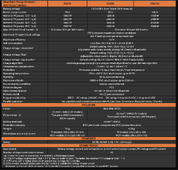Kiwi2000
Solar Enthusiast
Having recently upgraded from Epever SCC's I had always thought in terms of their 1.5 times max of oversizing of PV relative to the max output of the SCC.
But I was playing around with Victron's MPPT calculator recently and it seems like they are happy with substantially oversizing the PV array relative to the SCC.
This page here explains their reasoning...

 www.victronenergy.com
www.victronenergy.com
"You can now for example add the same type of modules in parallel later without the need to change the MPPT charge controller. This reduces costs to a minimum, whilst still increasing the yield!"...
..."The big advantage in doing this is that you will now produce the maximum controller output at a lower irradiation. As module prices decrease, this is an effective option"
Sure you need to keep under max voltage but you could add in more strings in parallel and substantially overpanel the SCC in terms of watts.
I have already tried this approach with one array and like the results. 1200 watts of PV feeding to a 100/50 SCC on a 12v system. 6 200w panels in a 3S2P arrangement.
Advantages are a more consistent output during the day. Also more consistent in cloudy weather. Each day I have collected around the same kwh regardless of the different weather conditions.
As such I think it'll be more consistent production throughout the year getting closer to the southern hemisphere's winter months of June and July. Instead of having ample surplus production during the summer months and struggling getting towards winter.
It's not that I'm just throwing away potential summer production. I can build my system to max out what the busbars and cabling and batteries can handle under good blue sky production and yet cloudy weather production isn't far off that as well.
What I am noting is the SCC running much warmer than the others because it's at its max amperage output for hours straight compared to the others that only hit their max output around the middle of the day.
Have any others have been doing this with Victron SCC and have the controllers handle it fine over a longer term?
But I was playing around with Victron's MPPT calculator recently and it seems like they are happy with substantially oversizing the PV array relative to the SCC.
This page here explains their reasoning...

Matching solar modules to MPPT charge controllers - Victron Energy
Life used to be so simple; in a 12V battery system you took a ‘12V’ solar module, watched carefully that the maximum PV current would not exceed the charge controller maximum current and the system would work. Unfortunately due to the fact, that with PWM controllers the PV module is not feeding...
"You can now for example add the same type of modules in parallel later without the need to change the MPPT charge controller. This reduces costs to a minimum, whilst still increasing the yield!"...
..."The big advantage in doing this is that you will now produce the maximum controller output at a lower irradiation. As module prices decrease, this is an effective option"
Sure you need to keep under max voltage but you could add in more strings in parallel and substantially overpanel the SCC in terms of watts.
I have already tried this approach with one array and like the results. 1200 watts of PV feeding to a 100/50 SCC on a 12v system. 6 200w panels in a 3S2P arrangement.
Advantages are a more consistent output during the day. Also more consistent in cloudy weather. Each day I have collected around the same kwh regardless of the different weather conditions.
As such I think it'll be more consistent production throughout the year getting closer to the southern hemisphere's winter months of June and July. Instead of having ample surplus production during the summer months and struggling getting towards winter.
It's not that I'm just throwing away potential summer production. I can build my system to max out what the busbars and cabling and batteries can handle under good blue sky production and yet cloudy weather production isn't far off that as well.
What I am noting is the SCC running much warmer than the others because it's at its max amperage output for hours straight compared to the others that only hit their max output around the middle of the day.
Have any others have been doing this with Victron SCC and have the controllers handle it fine over a longer term?



